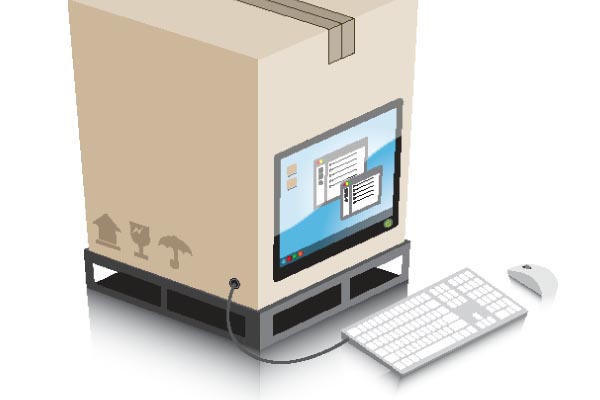Trends—April 2010

Logistics IT: Keying Into Shipper Demand
Inbound Logistics’ annual Top 100 Logistics IT Providers survey and outreach canvasses solutions providers to understand the challenges and opportunities their customers confront as they navigate the global supply chain. How and where shippers direct logistics technology spend exposes broader trends in the transportation and logistics space.
Companies invest in logistics and supply chain solutions to address operational problems and drive strategic decision-making. This past year was particularly trying for retailers and manufacturers, given the draconian impact of a global recession. As profits dried up, businesses were forced to shake as much cost out of their structures as possible.
So it is no surprise that 95 percent of technology companies responding to IL’s survey cite cost as their customers’ greatest challenge—compared to 92 percent in 2009—followed by visibility (80 percent), customer service (70 percent), integration (65 percent), transport optimization (54 percent), and data synchronization (43 percent). All data reveals marked increases over 2009 numbers.
The cost versus customer service dichotomy is always an intriguing touch point. While customer service remains a top concern, this year’s data (no change from 2009) suggests it’s still secondary—and by the numbers, tertiary to both cost and visibility—as businesses scrap and scrape for ways to squeeze out spend. It’s a delicate balance that has dire consequences if companies and brands lose market share to poor customer service.
Given the difficulty and cost of moving less freight while still meeting time-to-market expectations, transportation optimization is a key differentiator for companies exploring ways to streamline their supply chains. Whether consolidating and building more complete loads, eliminating LTL moves, rationalizing haulage miles, or embracing intermodal options, shippers leverage transportation management, routing and scheduling, and optimization solutions to find greater efficiency and economy. Companies are also mindful of the recent fuel crisis and increasingly committed to reducing their carbon footprints, reflected by the fact that 31 percent of IT company respondents see green initiatives as a priority among their customers—up four percent over last year, and despite recessionary constraints on discretionary spending.
Lack of visibility is still the bane of transportation and logistics practitioners, especially as supply lines grow longer and third-party networks become more complex. Global trade management solutions have become a hot IT commodity as a result of continued offshore expansion, more stringent regulations such as U.S. Customs and Border Protection’s Importer Security Filing, recurring concerns about product quality, and visibility among disparate suppliers and contract manufacturers.
Visibility, integration, and data synchronization are shared challenges that feed off one another. Embracing demand-driven logistics and efficiently and economically matching point-of-sale signals to production and inventory requires information synergy, then visibility, so that all parties in the supply chain have access to vital order and shipment data. Breaking down functional walls and integrating operations is contingent on marrying these elements. Optimizing one without the others—for example, increasing visibility but failing to synchronize data—only optimizes dysfunction.
Technology integration is also a key challenge for companies as modular, add-on solutions gain traction. Freewheeling IT spend has given way to a more judicious approach to investment with specific and shorter-term ROI goals. On-demand and Software-as-a-Service (SaaS) applications offer greater flexibility without costly and timely implementation and maintenance—but they also require connectivity with legacy systems and external business partners. As outsourcing continues its steady growth, IT integration across all areas of the organization and extended enterprise is critical to creating seamless visibility.
Of less importance to shippers, according to surveyed technology companies, is scalability (41 percent) and security (27 percent)—both of which show noticeable drops compared to last year. Apart from seasonal fluctuations, market contraction has forced industry to scale supply down to match tepid consumer spending. Economies of scale are difficult to capture when there isn’t enough critical mass in the pipeline and demand is speculative.
Rather, businesses have been more conservative in how they manage inventory. Many have simplified their SKU portfolios and naturally leaned their warehouses; others have relied on surplus stock to counter demand variability. Both strategies invite their own risks. With economic recovery, however, businesses will again need to consider supply chain scalability as they spring from defensive tactics and ramp up to meet demand.
Security, by comparison, has largely become an expectation among shippers and their transportation and logistics partners—a built-in value rather than a value-add. Theft, terrorism, and intellectual property protection are recurring concerns, especially as businesses stretch their global presence into developing countries. Technology security, especially for businesses that use hosted logistics solutions rather than local systems, also raises red flags about sharing sensitive information outside the organization. Safeguarding market position, however, has been a more compelling concern for businesses over the past two years.
Bitter Pill Prescribes Better SCM
A product recall was just what the supply chain doctor ordered for Tylenol manufacturer McNeil Consumer Healthcare, a division of Johnson & Johnson. After an arthritis medication snafu late last year ballooned into a 50-million unit recall encompassing several consumer medications, the company implemented fixes to its quality assurance and supply chain systems.
Following the recall, McNeil hired a forensics lab to confirm its suspicion that the breakdown of a preservative used on wood pallets was the culprit behind a product and packaging odor that sickened some consumers.
As a corrective and preventive action, the manufacturer now requires suppliers to ship drug ingredients and packaging components on heat-treated pallets instead of those treated with the preservative. McNeil has also destroyed on-hand components shipped on pallets that could not be confirmed as preservative-free.
As further measures, McNeil recently brought over a new president of quality assurance from Johnson & Johnson’s global pharma supply group; changed field alert reporting and investigation procedures; and revised complaint review and handling procedures.
